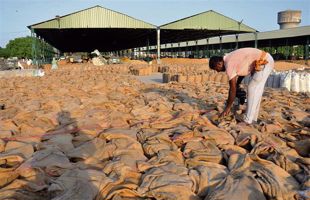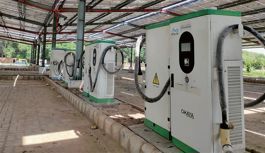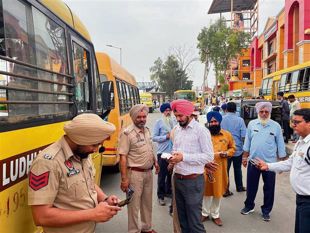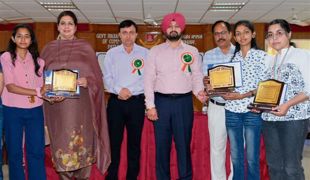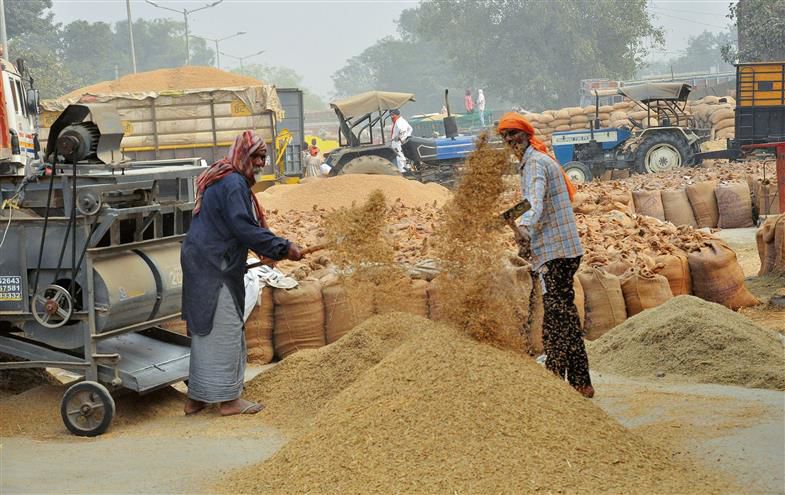
NEEDED: A blueprint for food processing and farm waste-based energy-generating industries. - File Photo
BS Ghuman
Former Vice-Chancellor, Punjabi University, Patiala
PUNJAB’s economy is growing, but at a rate slower than that of many other states. It grew at an average rate of 5.04 per cent between 2012 and 2022, which was lower than that of Gujarat (8.41 per cent), Karnataka (7.43 per cent), Haryana (6.82 per cent) Madhya Pradesh (6.75 per cent), Telangana (6.62 per cent), Odisha (6.59 per cent) and Tamil Nadu (6.01 per cent).
The relatively low growth rate is attributed to four factors: (i) The state has not reaped the benefits of the heavy and capital goods industrial model, popularly known as the Mahalanobis model, for developing large-scale industry; (ii) the Green Revolution, which spurred agriculture, was not adequately linked with the industry; (iii) the potential of information technology has not been fully harnessed; and (iv) lukewarm response to the Fourth Industrial Revolution led by smart technologies like artificial intelligence and the Internet of Things. Had Punjab optimally used these opportunities for development, the slowdown in the economy could have been averted. It is, however, not too late to formulate strategies to leverage these opportunities for economic development.
The first opportunity which Punjab missed relates to the heavy industry model, which was adopted in India during the Second Five Plan (1956-61). In this model, top priority was accorded to developing heavy and basic industries. It was also decided in the Industrial Policy Resolution, 1956, that these industries would be set up in the public sector. States like Maharashtra, Uttar Pradesh, Tamil Nadu, Odisha, Gujarat, Chhattisgarh, Madhya Pradesh and Karnataka received the lion’s share of the Central Public Sector Enterprises (CPSEs) investment and employment. Punjab, unfortunately, got a minuscule share of the CPSEs in terms of both capital and employment. As per the Public Enterprises Survey 2022-23, Punjab got only 0.87 per cent of the total value of capital assets of the CPSEs and these enterprises in the state generated only 1.85 per cent of their total employment. The abysmally low investment of the CPSEs deprived Punjab of the development of heavy industry as the structure of industrial development reveals that medium- and large-scale industry constitutes less than one per cent of the total industrial units in the state.
The state has also failed to strengthen the linkages between agriculture and industry. The Green Revolution was introduced as a flagship programme by the Central Government to ensure food security. Punjab emerged as a leading state in improving the yields of wheat and paddy phenomenally. A major share of these crops procured at minimum support prices is contributed as such to the Central pool. In the state, value addition to foodgrains before exporting them to the rest of India hardly takes place. Farmers of Punjab and the state enjoyed the fruits of the prospering agriculture. The policymakers, however, did not envision the future of Punjab beyond agriculture and, hence, could not prepare a roadmap integrating agricultural success with industrial development. Had there been, along with the Green Revolution, a development model strengthening a complimentary relationship between the developed agricultural sector and the industry, Punjab’s economy could have grown at a faster rate.
Punjab has largely not been able to exploit the potential of information technology. This, unfortunately, has taken place in spite of having a well-developed network of technical educational institutions and the availability of trained technical graduates. In the absence of an IT revolution, most of the graduates have made Bengaluru, Hyderabad, Chennai and Gurugram their employment destinations. No doubt, attempts were made in Punjab to develop IT hubs, particularly in Mohali, and initially, a good response by IT companies was observed. But due to IT policy paralysis, Mohali lost ground to the IT hubs at Gurugram, Bengaluru, Hyderabad and Chennai.
Another opportunity which Punjab has missed relates to the Fourth Industrial Revolution. This revolution, besides other factors, is driven by smart technologies like artificial intelligence, Internet of Things and 3D printing. The success of this revolution largely depends upon the collaboration between industry and educational institutions. Punjab has a widespread network of educational institutions, consisting of 40 universities, 80 engineering, technology and architecture colleges, 499 arts, science, commerce and home science colleges and 12 medical colleges. It also has companies working in the field of smart technologies. Additionally, it has the distinct advantage of a large global Punjabi diaspora having a good experience in education and industry using smart technologies. Unfortunately, all stakeholders in the state are working in isolation and, hence, lack the much-needed collaboration.
Despite the lapses, Punjab can unlock its potential for economic development. In spite of a drastic reduction in the role of the public sector in the economic reforms introduced in 1991, Punjab can reap the benefits of the heavy industry model by revitalising its public enterprises and using the public private partnership model. The Central Government is spending huge sums of money on building high-tech infrastructure. The Punjab Government should submit proposals for feasible projects to the Centre for creating world-class infrastructure, which would definitely have a multiplier impact on the economy.
Being agriculturally advanced, Punjab has a huge scope for agro-based industries, particularly food processing and agricultural waste-based energy-generating ones. The state government, in consultation with farmers, youth and industrialists, should prepare a blueprint for developing such industries.
Finally, information and smart technologies and online marketing can boost industrialisation in the state by addressing the constraints, such as it being a landlocked state, locational disadvantages of the national market, a lack of mineral resources and expensive land. These industries require less land, use intensive knowledge inputs and lightweight raw material, which is cost-effective to import. These industries produce high-value output, having low weight, and, thus, their marketing, especially through the e-marketing mode, is also cost-effective.
To make it happen, the government should provide a common institutional platform for educational institutions, IT- and smart technologies-led industry and the diaspora to work together to make the most of the Fourth Industrial Revolution for development.
Join Whatsapp Channel of The Tribune for latest updates.






















